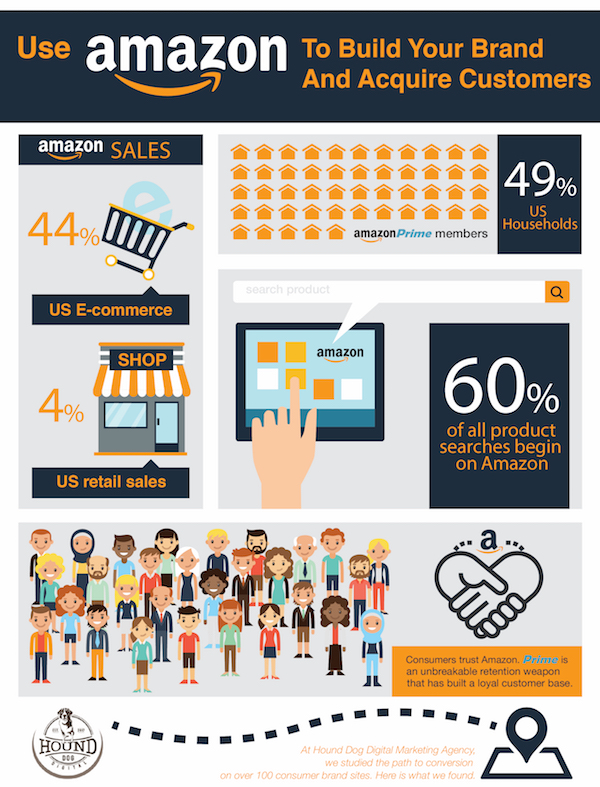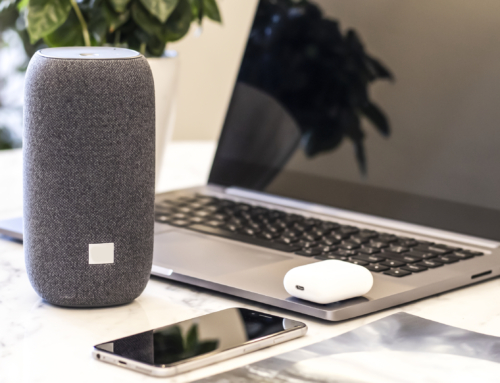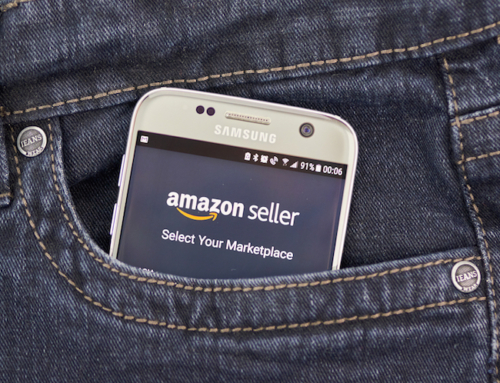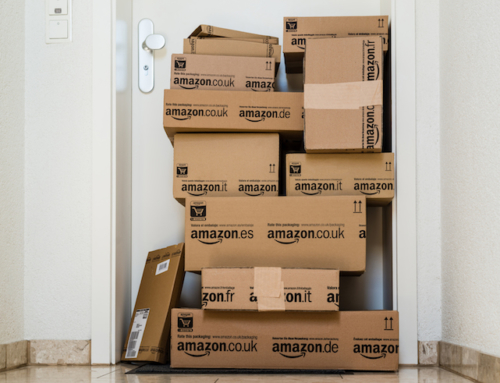Use Amazon to acquire customers and build your brand. It is possible and it is being done. We have been using Amazon in this way since 2007. You just need to think differently.
The Amazon Marketplace is the most significant online retailer today. If you utilize it to your advantage, you can use this power to build your brand. We have developed a successful method with which you can use Amazon to acquire customers for your e-commerce business.
Understanding the customer journey is key to this process. The modern customer purchase journey provides the path to use Amazon to acquire customers for your brand.

Follow the customer journey to use Amazon to acquire customers and build your brand
Share this Image On Your Site
Use Amazon To Acquire Customers & Build Your Brand
Today’s consumer relies on Amazon above other sources. Consumers trust Amazon.
Amazon Prime, with its more than 25 benefits, has created customer loyalty for the Amazon Marketplace.
Prime is not about free two-day shipping. It is a retention tool that Amazon has effectively used to grow their customer base. This is one of the key points you need to understand to use Amazon to acquire customers.
Why You Should Sell On Amazon
If you are selling any consumer product, you need to sell on Amazon to extend your brand. Why? Amazon.com accounts for 44% of all us e-commerce sales and 4% of all retail sales. Amazon has Over 7 million site visits every day. 49% of all US households have a Prime membership. More than 60% of all product searches begin on Amazon.
What does this all mean?
Amazon is where the customers are. You need to sell your product where the customer is buying. This is not to say that Amazon is where you should focus all your efforts. However, it is important to acknowledge what Amazon is and what it means to the customer.
Think about Amazon and the customer differently than you have before. Think about how to use Amazon to acquire customers and build your brand. Look at Amazon as a brand building and customer acquisition tool.
The New E-commerce Shopper Purchase Journey
The shopper journey has changed online over the last five years as a direct result of how Amazon and Prime have grown. This shift in consumer purchasing patterns is the foundation of how a brand can use Amazon to acquire customers.
At Hound Dog Digital Marketing Agency, we studied the shopper purchase journey of over 100 consumer product websites. These were e-commerce sites with annual sales between $10 million and $250 million. We tracked the upstream and downstream journey around each site over a two-year span. Through the use of tracking pixels and attribution, we were able to see this pattern emerge.
When a customer is exposed to a brand or product that is new to them, they usually find the brand’s website. Whether that exposure is via an ad, an article, a friend, or another form of promotion, the initial search for more information finds them on the brand site. Of these searches, 63% occur on a mobile device.
What Consumers Look For In A Website
What the consumer is seeking on a website are quality and legitimacy. Online consumers today are hesitant to give up their credit card information to an unknown entity. This is one of the most significant psychological barriers to conversion in e-commerce.
Therefore, if the website and social media represent a good quality brand, then the consumer moves on to reviews. Consumers will check Google and Facebook reviews to look for what others are saying. If these reviews appeal to them, the next stop is Amazon.
Why Amazon?
Here is where Amazon plays a prominent role. The consumer wants to see if the product is carried on Amazon and how Amazon users have reviewed it.
If everything checks out for them, over 92% of the time, they make their purchase on Amazon.
If the product is not on Amazon, they move on without making a purchase. Then it takes a lot more work to get them to buy directly from the brand.
Why? One word.
Trust
Consumers are hesitant to give out their payment details to a brand or website unknown to them. People are comfortable making purchases on Amazon because they have a solid reputation. Consumers trust Amazon. They know that if anything goes wrong or they aren’t happy with the purchase, Amazon has their A to Z guarantee.
Taking this information into consideration, you can apply it to benefit your brand. The customer already knows who you are; they just chose to make their first purchase on Amazon.
Understanding this behavior is the first step to use Amazon to acquire customers.
The consistency of your brand identity and brand message across all platforms is essential. You need these assets to connect and engage with the customer wherever they find you online.
Selling A Brand Vs. Selling Products
Amazon wants brand sellers over product resellers.
In the early days of Amazon, resellers made up a bulk of the options on the marketplace. Resellers will sell anything they can get their hands on. They don’t own the brand, and they don’t represent the brand.
There were hundreds of resellers selling the same products. That led to 2 major problems:
1. proliferation of counterfeit products
2. artificially low prices.
As a response, Amazon began protecting brands. They established systems like the brand registry. They continue to crack down on counterfeit products and restrict resellers that don’t meet expectations. This has led to an evolving marketplace where brands are becoming more important.
Brands provide a better value to the customer and make the marketplace more appealing. Too many resellers with counterfeit products are bad for business.
Control Your Brand By Controlling Who Can Sell It
When a brand doesn’t control their online presence, they often run into problems in the marketplace. In brick-and-mortar stores, they determine who will carry their product. They are also able to implement Minimum Advertising Pricing policies and brand standards.
E-commerce is a different animal. Brands allowed it to become the wild, wild west. There was no regulation of who could sell their brand. There was also no control over where resellers could market their brand. The result is a mixed reputation, an inability to control the representation and quality, and overly competitive pricing.
To avoid these obstacles, maintain control of your brand identity online from the beginning (or as soon as possible.) Ensure that anyone who is reselling your brand is maintaining your brand standards and representing your product properly.
You Can Build A Multi-Million Dollar Brand On Amazon
There are many examples of brands who successfully began on Amazon and scaled to become large businesses. Tuft & Needle and Anker Portable are just two examples.
There are also many large brands that are gated on Amazon.
What this means is that no resellers can sell their brand. Some specific examples include Nike and all P&G products. Many smaller brands have followed suit.
By controlling your brand, you can maintain a consistent brand message to the consumer. Similarly, you keep your retail price integrity and manage your profitability.
Managing how the consumer sees your brand is another key component to use Amazon to acquire customers.
There are three keys to success as an Amazon seller.
First Success Key
The first key to Amazon success is simple and should be woven into the fiber of any e-commerce brand: Customer experience is everything.
Amazon is a customer-focused company. They expect the same from their sellers. Bad sellers get their product pushed down in the rankings. They pay more for ads and have a difficult time winning the buy box, Even if they have the lowest price.
If your product rating dips below a 3.6, you will be shut out of lightning and daily deals, as well as other essential ad opportunities. A review rating of 3.6 or below is not a product providing an excellent customer experience.
All ratings hold a significant amount of weight to the consumer purchase decision and the A9 Algorithm. Both of these are important aspects for propelling your brand up the rankings and increasing brand awareness.
Second Success Key
The second key is simple. Relevance and performance measure success. Amazon’s algorithm attempts to match the best quality product to the customer’s search query.
Amazon measures relevance by product title, brand, bullet points, images, description, and keywords.
Performance is measured by sales velocity, sales history, inventory and fulfillment price, conversion rate, seller feedback, and product reviews.
Third Success Key
The third key sums up Amazon’s algorithm. Success results in more success. From Amazon’s perspective, lower costs drive lower prices, which drive higher growth, which drives lower costs.
From the sellers perspective, more sales drive higher rankings, which drive better placement, which drives more sales.
If you create compelling, optimized listings, you’ll get more conversions and sales. When your sales increase, that product rank higher. When the product ranks higher, it gets better organic search placement. With better organic placement, a product sells more. When a product sells more, it ranks higher. When it ranks higher, it sells more. It’s an “upward spiral.”
Providing customers with a great experience helps a brand use Amazon to acquire customers.
How To Build and Protect your Brand on Amazon
Enter your brand trademarks into the Amazon Brand Registry. Control who and where resellers can sell your brand online.
Once you are in the brand registry, aggressively shut down any unauthorized sellers quickly. Use MAP (Minimum Advertised Pricing), so you don’t deflate your price points and profitability. Control the consistency of your brand’s representation across all selling channels.
Reviewing the customer purchase journey discussed previously, consistency of brand across all channels is crucial to being able to use Amazon to acquire customers.
Additional Resources
Once you enroll in the brand registry, you get additional resources that are not available to resellers. You can build Enhanced Brand Content on your product’s Amazon pages. Enhanced brand pages allow you to communicate additional product benefits to customers.
You can add your brand logo, more images, text, and video to describe your product. They also allow you to build a storefront with multiple pages to explain your brand in more depth.
But Amazon Owns The Customer
Customers are very savvy today. If you engage with them correctly on any platform, you will win them over. You don’t have to give someone your website today. If they like your product and want more, they will find you.
Yes, it is true that Amazon owns the customers on their site. However, you get many opportunities to communicate your brand and your brand message. You cannot send customers directly to your website, but you can do it indirectly.
Again, reviewing the purchase path we showed earlier, the customer has probably already found you. There is a good chance the customer has already been to your website.
So, how do you establish customers who want to be loyal to your brand in such a vast marketplace? Make sure they don’t regret their first purchase. Communicate with consistency when representing your brand and brand message using the tools that Amazon provides.
Merchandising to Capture Customers
Use your merchandising, product selection, packaging, and packaging inserts to drive customers to your site. While developing product merchandising, consider how it will influence conversion of customers. You want it to drive them back to your site.
Merchandising
Here is an example of a proven merchandising approach to use Amazon to acquire customers. I have used this process over and over in many different product categories.
One product category that we have worked with extensively is skin care. The approach we used was simple. We only offered skin care sets on Amazon. Two-piece, three-piece, four-piece, and five-piece skincare regimens with a variety of products targeting specific applications.
Inevitably, the customer will run out of one item in the set. When they want to replenish that single product, they will email us through Amazon. We could not directly say “go to our website.” That would be a violation of Amazon’s seller terms and conditions. What we could say is this:
“Sorry Ms. Customer, we don’t carry that single item on Amazon at this time outside of the sets.”
The customer is not naive. They know how to use the internet. They have your product. Your packaging specifies your brand name, phone number, and website. Your packaging should be clear, and you should be easy to find when the customer searches for you.
Inserts
We always include an insert in the package. It may be a step-by-step usage guide or a list of additional products with product descriptions. Whatever the insert is, it needs to be branded.
The customer bought the product, and they’re happy with the product. Now they want more. We just told them we do not carry that product on Amazon as a single item. So, they would go to the website and buy the product they needed. We could easily convert over 70% of our Amazon customers like this.
There are many ways to merchandise to use Amazon to acquire customers.
Another example is using a mobile app which unlocks advanced features for your product. You have to think creatively about how to use inserts, packaging, and products to acquire customers.
Capture Your Website Visitors
Today, there are so many tracking and attribution tools that you can put on your website. You can retarget customers who visit your website. You can follow their online path. With the right tools, you can even find out who they are and unmask their email address.
Again, think about the purchase journey we showed earlier. Your Amazon customers are going to go to your website to find out about your brand. Make sure you are ready and have the right tools established to communicate with them.
Ads Create Awareness For Your Brand
There are two types of ads you can run as a seller: Sponsored Products and Headline Search. Using these ads, you can put your brand front-and-center on Amazon. They are no different in form and function than banner ads running through AdWords.
The difference is where the click ends up. The CPC on Amazon is much lower than AdWords right now. So, you are using these ads to make your brand visible to the customer when they are looking for items in your category.
We have a furniture client who employs this ad strategy. The brand gets more purchases on their website from customers who see their ads on Amazon. The customers have gone to the furniture retailer website and noticed that they offer an installation service that they cannot offer on Amazon. They see the product on Amazon, and they see the reviews. The selling price is the same on both sites. However, they can add the installation option if they buy directly on the site, so they do.
This example is a perfect illustration of the purchase journey we have studied. Communicate to get reviews and engage buyers.
Reviews, Reviews, Reviews
Reviews are critical. We all know this because we all use them when making personal purchasing decisions. Product reviews transcend Amazon.
There are two types of reviews you want: Seller Reviews and Product Reviews. Both types of reviews affect how your brand will perform on Amazon. Both are customers communicating back to you about their experience. As a seller, they are both important to you.
Getting positive reviews is not as easy as it seems. Sellers sometimes use dubious tactics to obtain them. Many sellers use incentives to generate a higher volume of reviews. Others opt to post fake reviews. Amazon has put into practice strict policies to combat this practice. Getting caught not only damages your reputation, but it can also get you thrown off Amazon.com.
Get Legitimate Reviews
What your brand needs are legitimate reviews from real buyers. These reviews are known as “Verified Purchase Reviews.” Communicate your brand value through action. The buying experience is the first step to acquiring positive reviews. Don’t expect five-star reviews for a mediocre product or bad service.
The buying experience begins with your product pages. It is important to be mindful of how you communicate with the potential buyer before, during, and after the sale. If there is a customer service issue, resolve it quickly, friendly, and satisfactorily.
Inserts Are A Great Tool
Provide a personal touch to the experience by using printed inserts in the packages you send to the customer. Make these inserts part of your overall product plan.
The insert could be usage instructions, they could be a thank you card for trying the product, it could be a satisfaction guarantee card, or it could be instructions for an app that enhances your product.
The insert should state your brand message and commitment to customer experience. Don’t be shy about using these inserts to ask for reviews.
Providing a little card or leaflet doesn’t breach the terms and conditions. You can not make it mandatory for the customers to visit your site. You can not include your website address on the cards. Use good branding and communication, and the customers will come.
Remember, the customer is not naïve, they know how to use the internet.
Use Email
Autoresponder emails are one of the most important investments you can make. There are many systems. We have many clients on the xSellco Feedback product. Many people in multi-channel selling prefer the xSellco products because they are more omnichannel focused. There are many others to choose from. Do your research to find the one that works for your business.
Amazon does not share buyers’ email addresses with marketplace sellers. However, these platforms connect to your seller account to send auto-responder emails through the Amazon API to every buyer.
These emails are a highly effective way to communicate with your buyers. You can provide a direct link to the purchased product on Amazon to make it easy for the buyer to leave a product review. The key is to make sure to first focus on the buyer’s satisfaction before asking for a review.
Branding Your Emails
You can brand the email templates with your logo. Just remember that you cannot send a link to your website or add your website to the email. But again, customers are not naïve. If you give them a great product and a great experience, they will find you and become your customer. A great product and great experience are one of the most fail-safe ways to use Amazon to acquire customers.
Use these emails to ensure that you are communicating throughout the purchase cycle with your customers. Not only will you get more reviews, but you will also minimize bad reviews by solving customer problems before they vent on the review platform.
SEO Juice From Amazon
Because of how dominant Amazon is, products and brands listed on Amazon will show up higher on SEO. This will help your overall business. When the Amazon products show up on Google search, they show up with the star product ratings. This is a great addition and helps to sell a product. It also reinforces your brand’s legitimacy with the consumer.
The shopper’s journey has changed in the last five years. Consumers use all touchpoints together to make a purchase decision. A brand’s website, social media, and marketplace presence such as Amazon are all important vehicles.
Consumers are relying on Amazon today to check the legitimacy of products and brands and to make their purchases. Use this to your advantage by building a strong brand presence on Amazon. This will help you use Amazon to acquire customers.
Product pages, merchandising and packaging all work together to convert Amazon customers into your brand’s customers. These details will drive Amazon traffic back to your website. You cannot explicitly direct the customer to your website. However, if they love your product and the buying experience, they will find you.












[…] Source: https://www.crunchgrowth.com/2018/04/16/use-amazon-acquire-customers/ […]